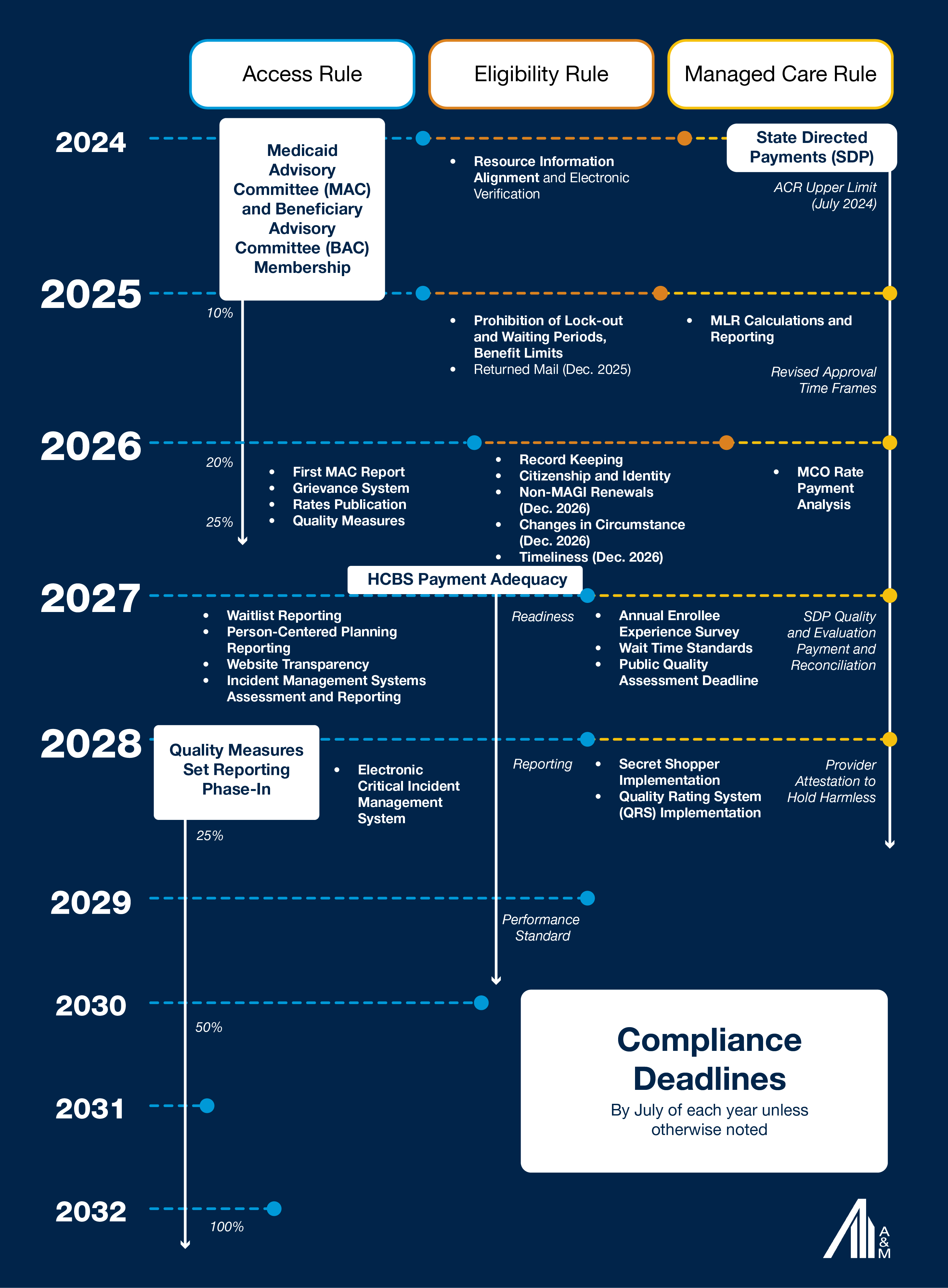Transforming Medicaid Through CMS Final Rule Implementation
Enhancing Transparency, Promoting Equity and Expanding Access to Care for All
In 2024, CMS released three final rules focused on ensuring increased access to Medicaid and CHIP services and establishing national standards for access for services provided through managed care plans or directly by states through fee-for-service (FFS).
Eligibility and Enrollment Final Rule
March 27, 2024
Simplifies Medicaid and CHIP processes by removing barriers, such as in-person interviews for certain populations, and allows medical expenses to be deducted from income when determining eligibility.
Ensuring Access to Medicaid Services Final Rule
April 22, 2024
Improves Medicaid access by enhancing transparency, standardizing data and encouraging beneficiary engagement to ensure broader access to care across various service systems.
Medicaid and Children’s Health Insurance Program Managed Care Access, Finance and Quality Final Rule
April 22, 2024
Focuses on enhancing access to care, improving quality, strengthening program integrity, reducing administrative burden, increasing transparency and promoting health equity.
Rule implementation may increase the burden on already resource-strapped agencies.
The end of continuous Medicaid enrollment authorized under the Families First Coronavirus Response Act (FFCRA) has been the largest healthcare transition event in over a decade. As state eligibility agencies continue to adjust to the “new normal,” ensuring rule compliance may strain states’ limited resources. The administrative changes prescribed in the final rules may require costly changes to states’ eligibility and enrollment processes that may not be supported by increased funding.
To reach compliance across all three rules, states will create new policies to drive new processes, which will be supported by systems changes.
States are faced with a challenge to execute three concurrent rules in a manner that adheres to timelines and does not create unsustainable change across the impacted programs and teams.
- Basic Implementation Approach: Teams and agencies operate in silos to implement three individually complex and separately addressed rules.
- Better Implementation Approach: Teams and agencies collaborate to implement three individually complex rules based on team functions.
- The A&M Implementation Approach: Teams and agencies collaborate to implement complex rules across policy areas and team functions while leveraging other efficiencies, such as additional flexibilities and waivers, to design a timeline for implementation that removes duplication of work and provides clarity to executives on progress.







